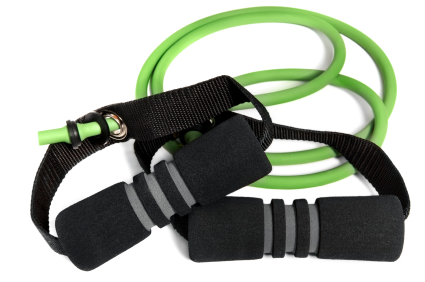Over the past decade, MomsTEAM has strived to inform, educate, and develop action plans to reduce the risk and number of youth sports concussions. In physical therapy, we know that there is no exercise to rehabilitate a concussion, but there are ways to help minimize the impact. As recent research shows, developing strong neck muscles and ideal posture can help reduce the risk of injury. Even if the risk reduction is small, it's still worth the effort.
A defined neck strengthening program is effective in three ways:

- "Head on a Pivot"
- Optimal head position during a tackle.
- Building awareness.
"Head on a Pivot"
The two main muscles of the neck include the sternocleidomastoid and the splenius. Together, these muscles move the neck forward, backward and sideways. Playing 48 minutes of high school football is not only a test of athletic skill, power, and raw talent but is tough on a player's neck. Wearing a heavy football helmet puts a lot of stress on the cervical vertebra and supporting neck muscles. As the game wears on, weak neck muscles may not appropriately rotate as the player goes to make a tackle. Limited range of motion in the neck means an athlete must either rotate the shoulders or lower back to compensate, potentially putting the athlete out of position. Seeing the whole field is critical in protecting the head.
Optimal head position while tackling
In addition, weak postural muscles, such as the mid and low back, will make it difficult for an athlete to hit "face to chest." Instead, fatigue will force the athlete to dip their head into a "ramming" position, which unfortunately aligns the cervical vertebra into a weakened posture. This orientation decreases the neck's ability to absorb shock, resulting in potential head trauma (e.g. concussion or worse) or spine fractures. An athlete with strong postural muscles will keep the head at the correct angle, resulting in the tackling force being dispersed more appropriately.
Building awareness
The most beneficial part of a regimented neck strengthening program is building awareness in an athlete. Football players, coaches, and parents are increasingly aware that concussions are part of the sport. We also know that, while there are methods to minimize injury there is nothing which can prevent a concussion. A neck strengthening program allows for education time from coaches and parents, as well as motivation for the athlete to complete the exercises.
In a physical therapy clinic, patients with neck pain despise doing neck exercises, but they know, if not completed, their neck pain will continue. For football players, the ability to lift a lot of weight during a bench press and squats, demonstrates power and earns them plaudits from teammates. The ability to complete a neck strengthening program using resistance bands and a postural training program with light weights does not have that same appeal.
Moving the neck in each direction against the resistance of a band strengthens the neck muscles. Rotating the neck against the resistance band trains the neck muscles, too.
Put it this way: if a football player knows that including neck strengthening exercises in their training regimen may just help them avoid a potential season-ending head injury, then the exercises might seem a bit more worthwhile.
Posted October 15, 2012; revised November 15, 2012; updated February 22, 2017








